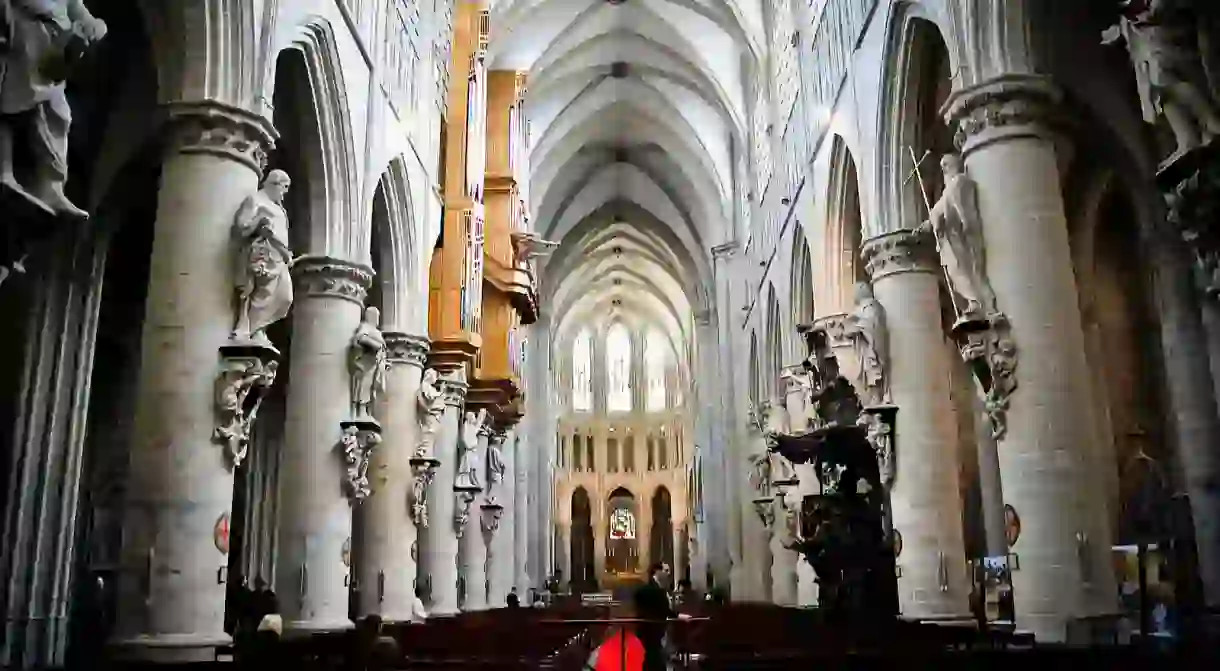History Of The Cathedral of St. Michael and St. Gudula in 60 Seconds

The Cathedral of St. Michael and St. Gudula is the Belgian monarchy’s preferred pick for princely weddings, coronations, and state funerals. Once described by Victor Hugo as “the purest flowering of the Gothic style,” this white, two-towered giant holds many medieval treasures inside, including splendid stained-glass windows donated by Charles V.
The Roman Catholic cathedral dominates a peaceful square nestled between Brussels’ upper and lower town known as Treurenberg Hill. While its façade seems deceptively simple compared to other examples of European Gothic churches, to the trained eye, it’s precisely this lack of eclecticism that sets it apart. Despite a building period that spanned from the 13th through to the 17th century, its interior and exterior are an ode to the purity of the style. Even with some resemblances to Paris’ Notre Dame, Victor Hugo still esteemed St. Michael and St. Gudula as the purest example of the Gothic architectural movement.
Inside, the usual bountiful flourishes have been set aside in favor of a more streamlined whole, leaving a couple of masterpieces room to shine. First to catch the eye upon entry are the monumental columns and soaring arches. Second is usually the solid wooden pulpit engraved by Antwerp artist Hendrik Verbruggen. Its detailed carvings show Adam and Eve’s banishment from the Garden of Eden by an army of skeletons. In the Chapelle du Saint-Sacrement, stained-glass windows commissioned by Emperor Charles V bathe the nave of the otherwise modestly hued church in colorful lights.
Though the church was only baptized a cathedral in 1961, its earliest roots go back as far as the 9th century, or perhaps even the 8th century, when a chapel is said to have been built on the hill to honor Archangel Michael, patron saint of Brussels. The temple dedicated to the capital’s protector soon got another hero: the lesser-known Saint Gudula, a martyr whose relics were brought over in 1047 when the chapel had already become a Romanesque church. The most significant and final transformation—into the Gothic pearl we see today—started in 1226 and would only finish a little short of three centuries later.
Fun fact: Every second and fourth Saturday of the month, it’s possible to climb the cathedral’s twin towers for those who book in advance. On your way up the narrow staircase for a magnificent view, you’ll pass the largest carillon of Brussels, 49 bronze bells rich.













